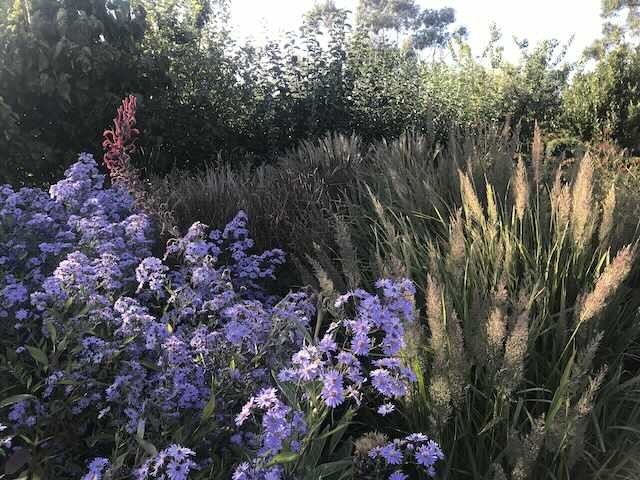
Lamium ovarla
Clumping plant liking moister soils in woodland and part shade or morning sun. Attractive whorls or pink flowers amongst good foliage. Likes growing with Siberean iris, ligularia, and astilbe.


A vigorous tall late summer flowering variety that never disappoints in its florferous abundance, provides good fill and the blue looks great with autumn grasses, sedums and rudbeckia.
A vigorous tall late summer flowering variety that never disappoints in its florferous abundance, provides good fill and the blue looks great with autumn grasses, sedums and rudbeckia.
Data sheet
Clumping plant liking moister soils in woodland and part shade or morning sun. Attractive whorls or pink flowers amongst good foliage. Likes growing with Siberean iris, ligularia, and astilbe.
Prolific mid season flowering verbena which combines well in meadow plantings amongst other perennials, the dark stems and foliage look particularly good in full sun with summer colours.
Attractive cottage plant and popular medicinal plant also. Easily grown in well drained soil, best with added fertiliser.
A recent introduction by us is this sedum from my mothers garden, with white flowers, which is an unusual colour in the world of sedums! As with other sedums, easy to grow in full sun position in most soil types. Rarely but occasionally these can produce a pale pink sport, which should be removed with a sharp knife at the crown at the time of flowering.
A very late flowering variety with tall wiry stems and in its early stages an interesting tight flower bud, providing a similar effect to craspedia globosa. Attractive low basal foliage, and a sculptural interesting plant for late summer groupings.
Shade loving variety with delicate soft pink flowers in summer. Use as background planting to hostas and hellebores for summer display.
We have selected this form for its showy larger than usual flowers and longer stem, which suits cutting for floral arrangements. To get the best out of these, plenty of fertility and moisture, shade to part sun.
One of the best achillea for foliage structure, the flowers are at their best pre colouring when the combination of grey flower buds and silvery foliage provide a lovely texture amongst summer perennials.
A useful pond side plant or for wet soils, where it will form a dense ground cover. Bright green leaves and red flowers during summer.
The best white persicaria we have tried, as with Taurus and others, these will flower in summer but good much and soil fertility will ensure their best performance. Waist high or fraction higher in moister conditions, basal foliage with drifts of vertical white spikes. We like to plant these in clumped groups of 5 or 9 at 25cm spacings for best effect.
Pink form of Astrantia major: a good companion for hostas and dicentras in woodland.
Low growing rivale type with a long flowering period, good for path edging or foreground beds, these do best in heavier soils with some fertility, but in good soil are drought hardy and will take some summer heat.
A pretty variety we raised a few years ago from experimental crosses, with some creative contributions from our staff for the name. Good clumping habit and a subtle colour.
Attractive deciduous specimen shrub, new growth is pink and green which becomes transforms to burgundy and flame red as the season progresses into autumn. Drought and frost hardy, slow growing.
Attractive shrub for the sunny border with apricot foxglove-like flowers in summer. Very drought tolerant but doesn't like frost.
Rare white form of the usual blue, useful for ground cover in part shade or sun. Vigorous and spreading like the blue form.

A vigorous tall late summer flowering variety that never disappoints in its florferous abundance, provides good fill and the blue looks great with autumn grasses, sedums and rudbeckia.